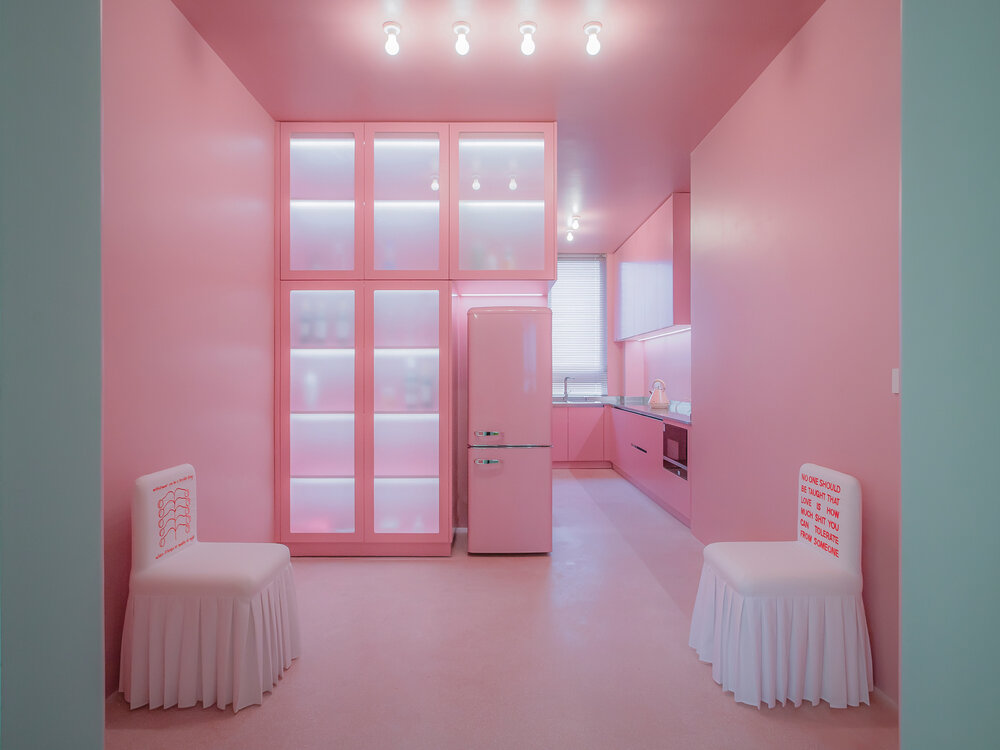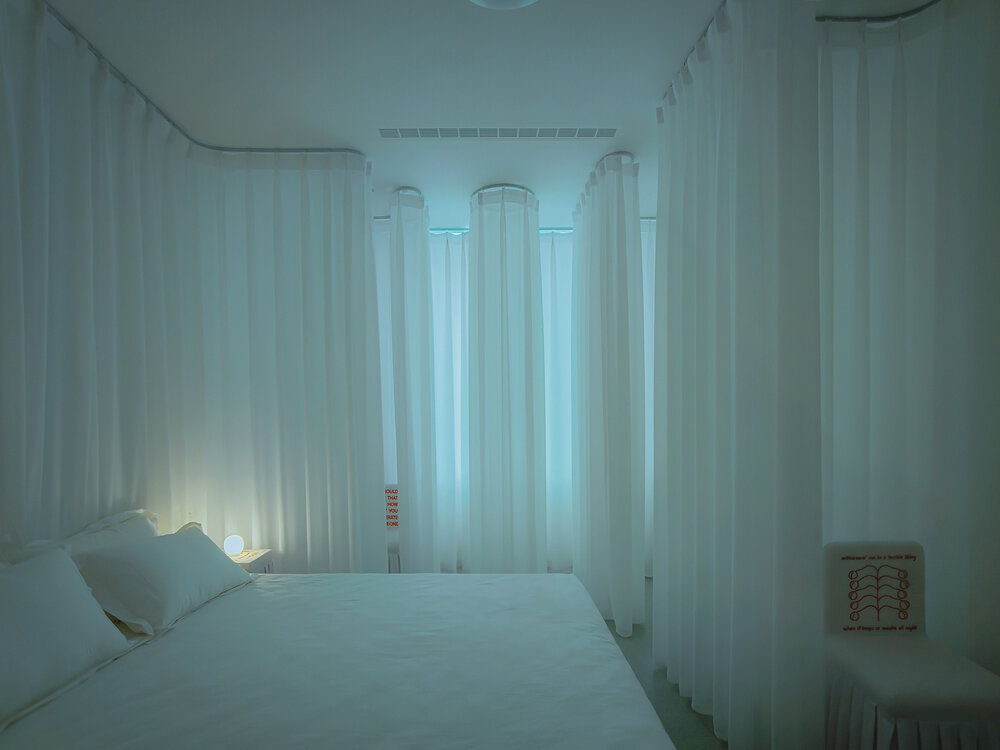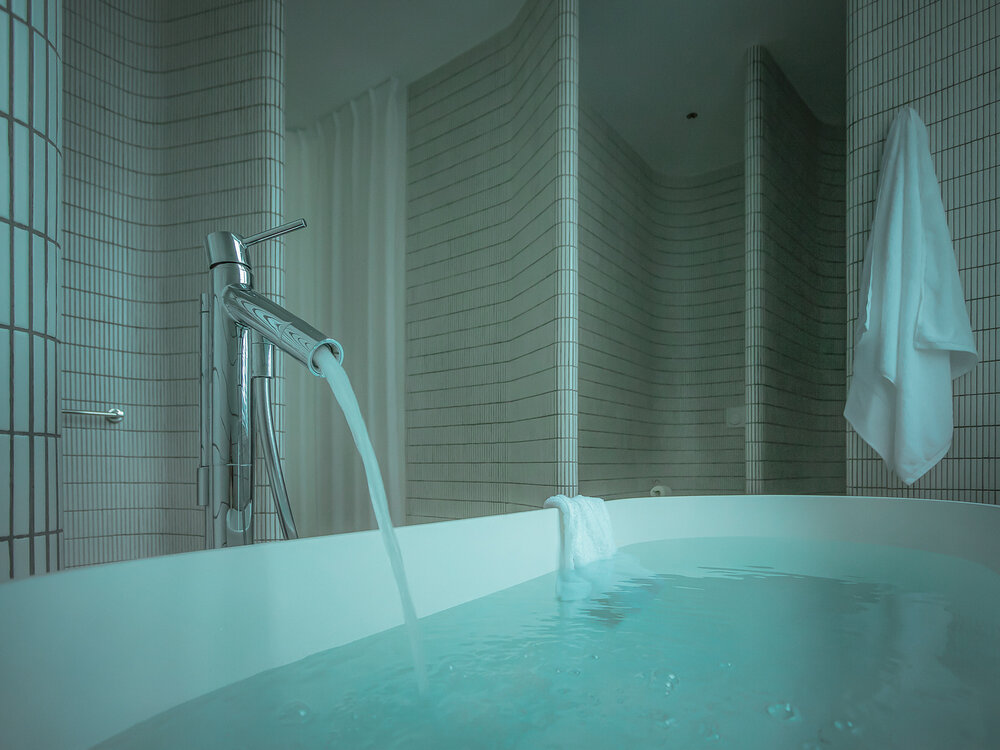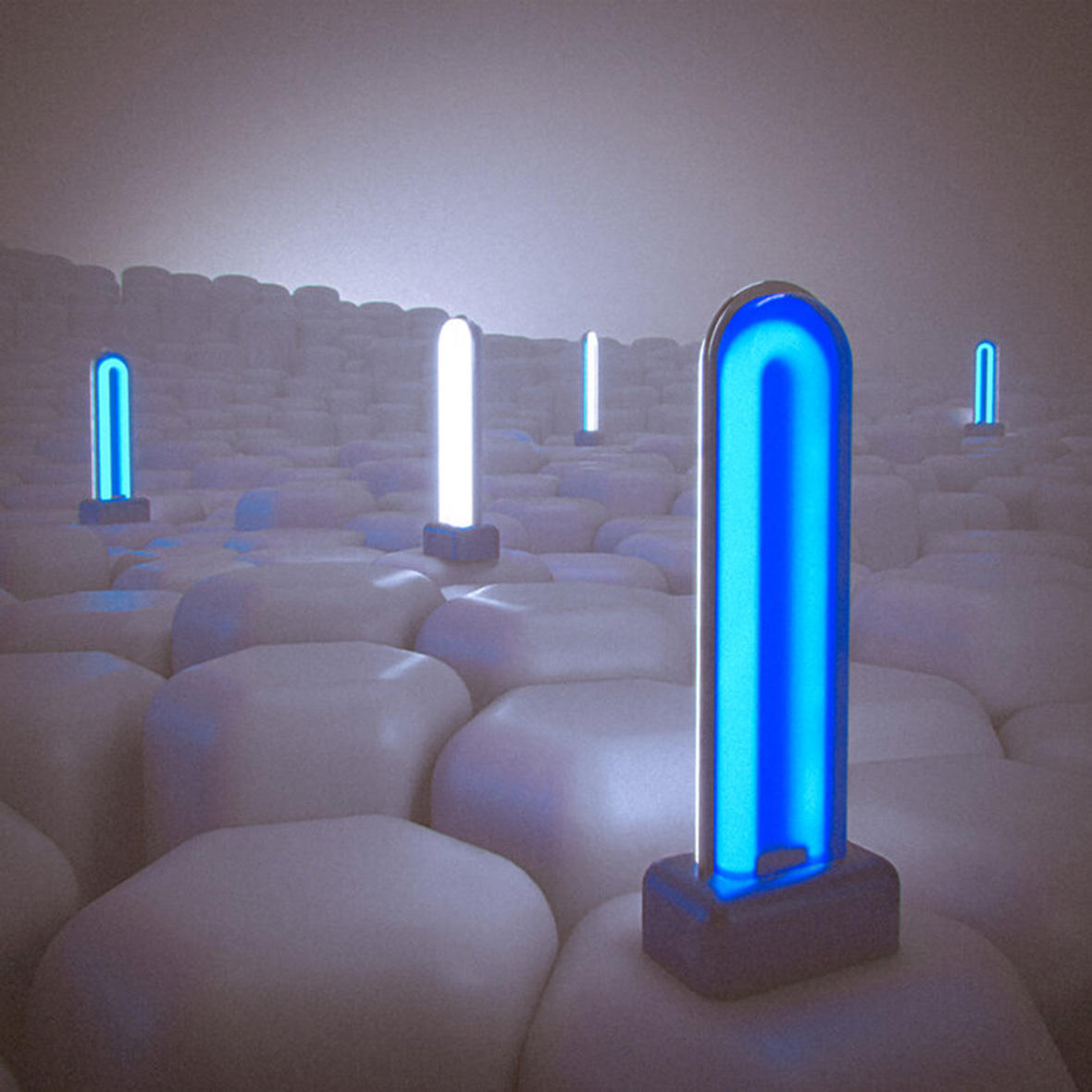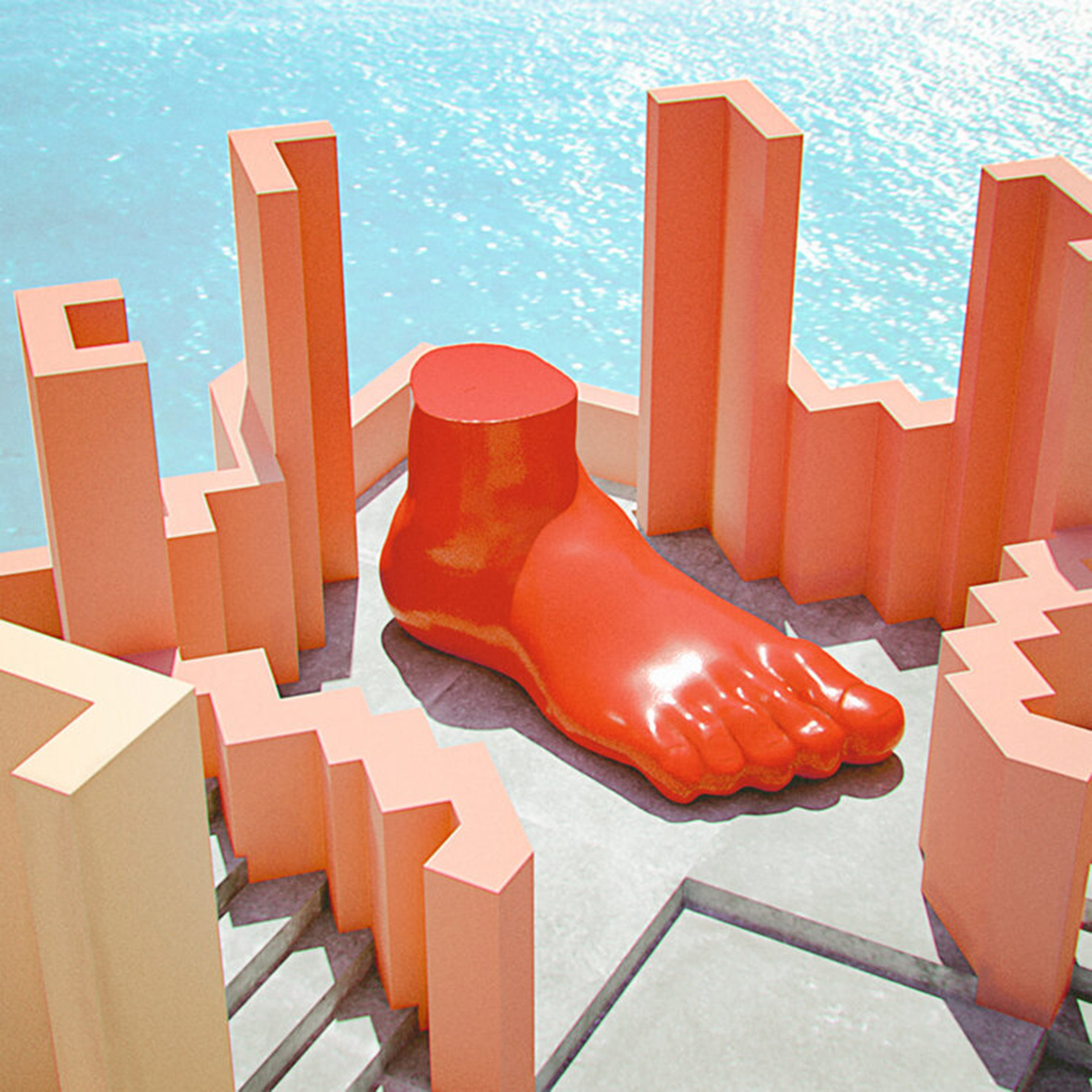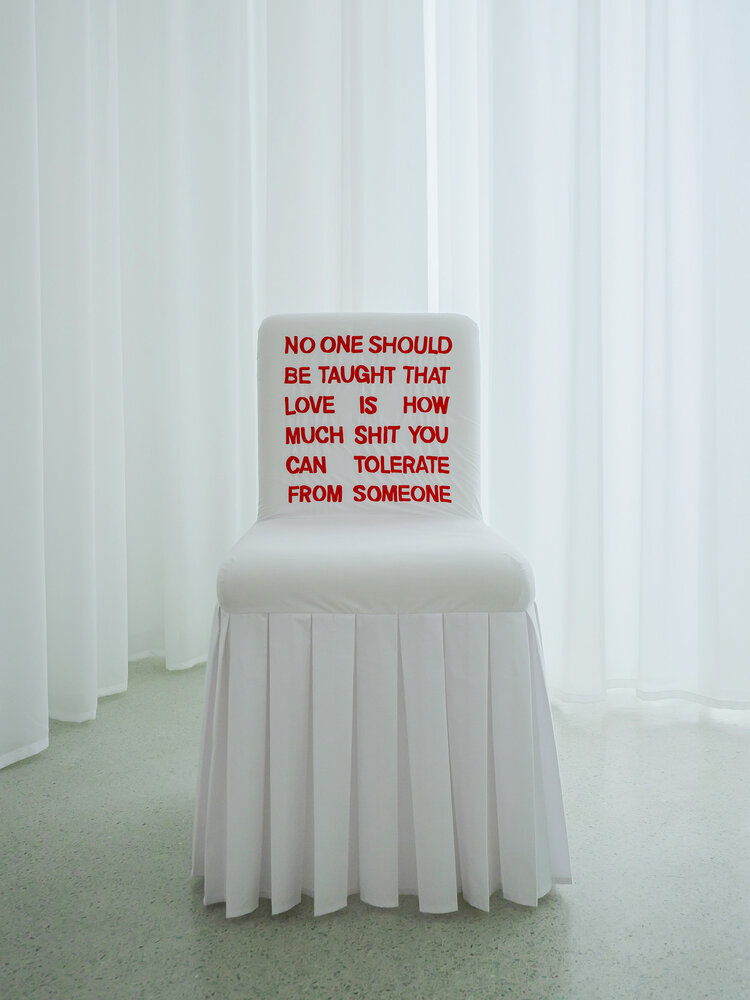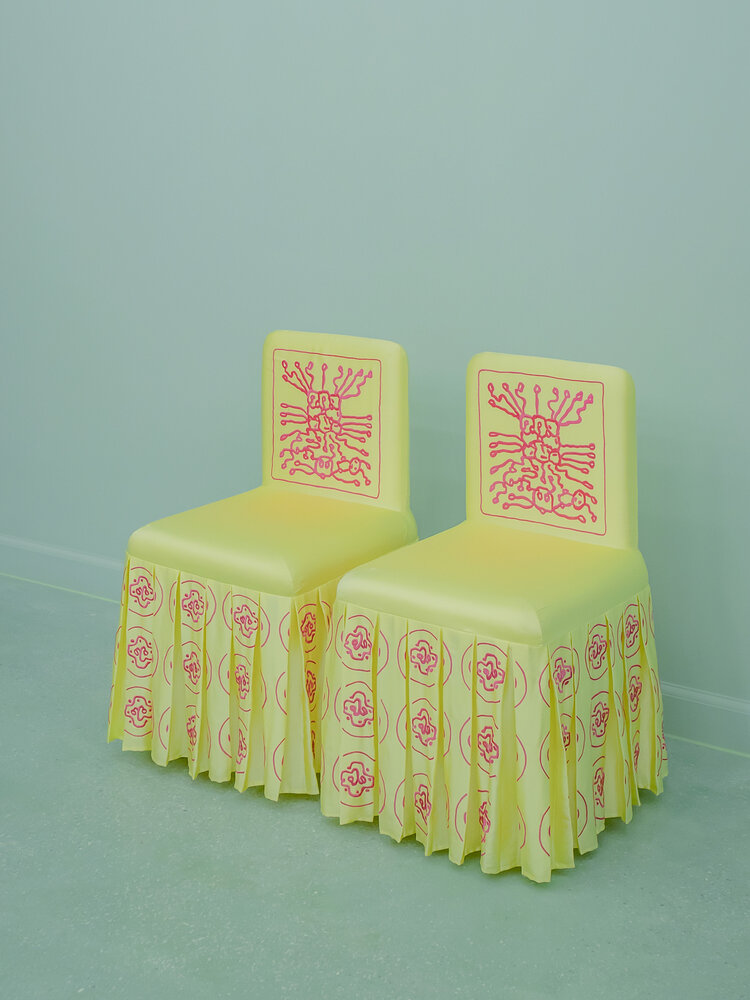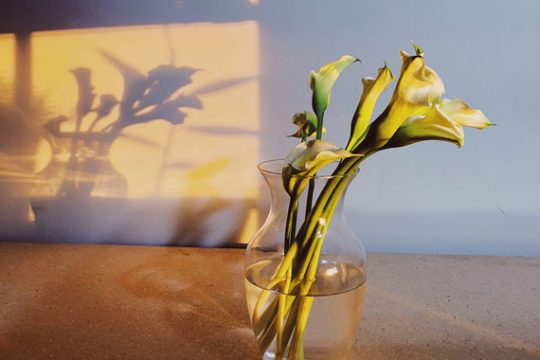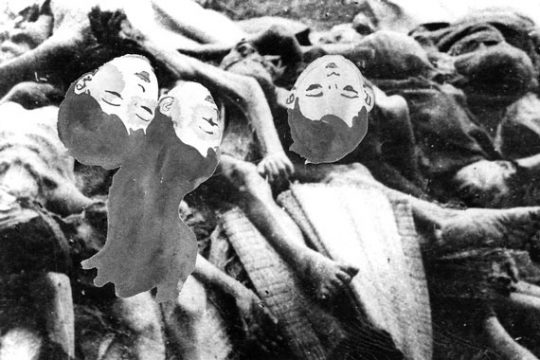
A hospital is meant to treat the sick, but when someone sees a surgeon’s gown or operating room, chances are it doesn’t make them feel better. Chinese artist Duyi Han wants to interrogate this disconnect, and his latest work explores how design, color, and tradition can impact people’s emotions and mental health. The installation, titled Ordinance of the Subconscious Treatment, is an immersive space that transforms an apartment into an “ArtBNB” where visitors are invited to reflect on conflicting and complementary forms of healing.
医院是救死扶伤之地,但当人们看到白袍或手术室时,却往往觉得晦气。中国艺术家韩笃一(Duyi Han)对这种错位的观念发起质疑,并在自己的最新作品中探索了设计、色彩和传统如何影响人们的情绪和心理健康。他创作的沉浸式的艺术装置,取名为《心伺令》(Ordinance of the Subconscious Treatment) ,其将一间公寓改造成“ArtBNB”艺术民宿,邀请观众来反思当中各种相互冲突的元素,来感受某种相辅相成的治愈形式。
In the dreamlike apartment, certain rooms are designed to evoke a sense of familiarity for those who grew up in China. In some areas, that familiarity is punctured by a sense of the surreal. In one room, traditional ceramics piled onto a table are spotlit by a surgical light; across the apartment, a plain corridor with newly erected walls is transformed into a maze; the dining room and kitchen are slathered in pink and furnished with retro-futuristic appliances; and in other parts of the space, furniture is embroidered with the molecular structures of various prescription drugs and neurochemicals. The most notable feature of the apartment though is the soothing green paint that covers the majority of the rooms, which is Han’s overt way of referencing hospital settings.
“Around the world, you see a lot of this similar kind of green in hospitals, even on their websites and staff uniforms. Historically more than now, but it’s still a landmark color that’s associated with them,” he says. “But I chose a green that’s warmer and feels softer, I wanted it to be calming.” (The pink areas, he notes, are meant as a way for the viewer to take a break from the green monochrome, a means of cleansing their visual palate.)
整间民宿仿如幻境,中国传统元素在现代、甚至未来感的灯光下莹莹发光,极具超现实色彩。譬如,手术灯下的传统陶瓷;立体墙柱,让走廊摇身变为迷宫;餐厅和厨房都涂上了粉色的油漆,与复古未来风格的家电交相辉映;家具,则被绣满各种处方和符号。不过,整间民宿最突出的莫过于覆盖房间的绿色油漆,这是一种令人心情舒缓的颜色,用来映射医院环境。
他解释说:“世界各地的医院,你都可以看到类似的绿色,甚至连医院的网站和员工制服也是这种绿色。虽然这种颜色现在比较少见了,但它仍具有代表性。我用了一种更温暖、更柔和的绿色,希望带给观众平静。”他指出,其中的粉色区域是为留给观众在满眼的绿色中一丝喘息的机会,避免视觉上的疲劳。
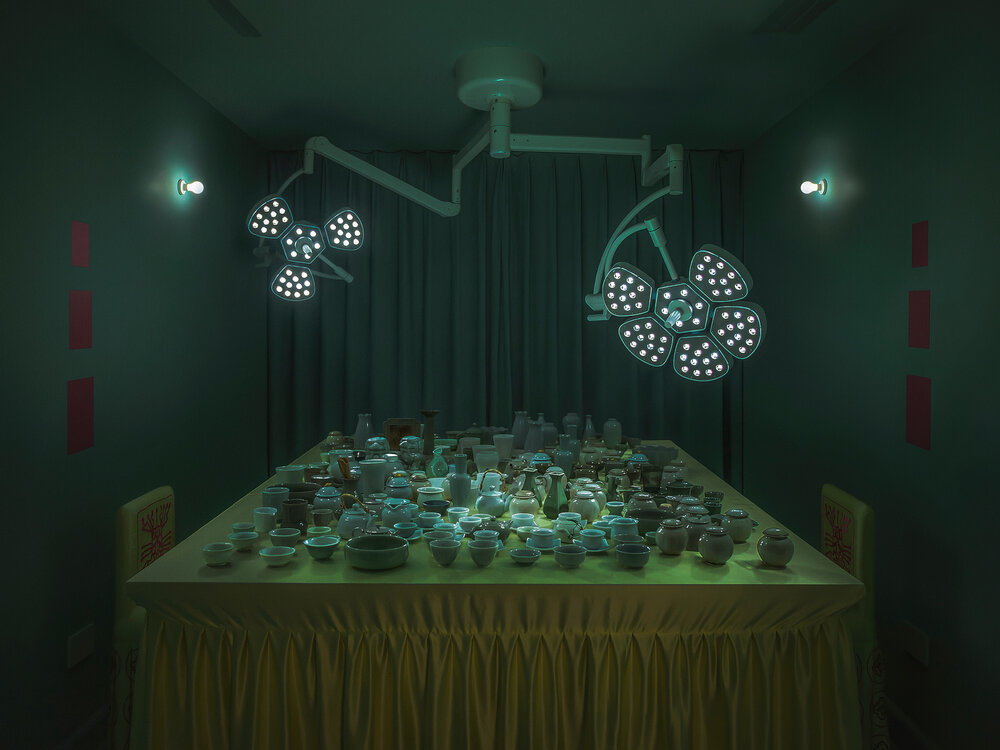
Han was born and raised in Shanghai, and the city’s incessant rate of change and massive size inspired his early interest in architecture. In elementary school, he was already creating imaginary cities and maps with Windows Paint. In university, he was drawn to more specific and expressive design fields. “I slowly realized that the more interesting architecture and design are smaller-scale projects and interiors,” he says. “Designing rooms can be very intimate and artistic in comparison to the process for larger buildings, which are more technically oriented, have more limits, and involve larger teams.”
韩笃一在上海出生和长大,城市的瞬息万变与庞大规模,激发了他对建筑的兴趣。小学时候,他已经能用电脑画图工具来创作想象中的城市图景。大学期间,他迷上了更具体和更具表现力的设计领域。“我慢慢意识到,规模较小的项目更有意思,比如室内设计。与设计整幢建筑相比,设计一个房间感觉更私密、更个人,前者则更注重技术,有很多限制,也需要更大的人力,”他说道。
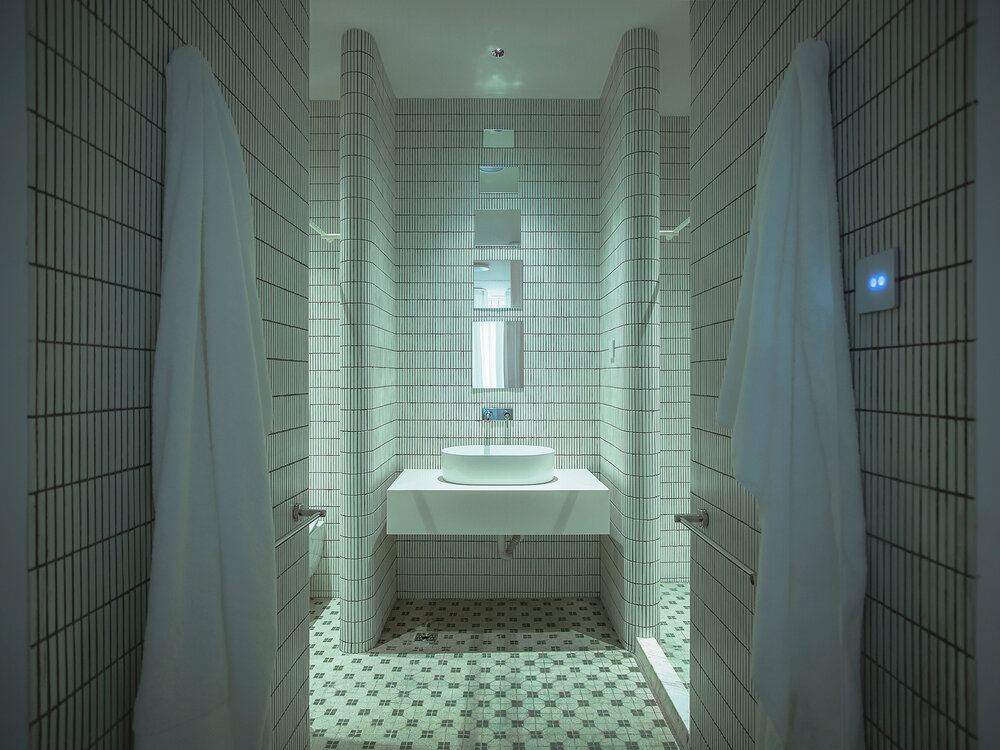
His work today often culls inspiration from the past, with a strong focus on retro movements and the traditions of China. “Aesthetics from the past move people and evoke rich feelings,” Han says. “I look to respond to history and heritage to see how previous things can be used in new and contemporary ways.” His earlier series, Different Tendencies, featured a collection of furniture by Italian designers from the 60s and 70s situated in computer-generated settings inspired by moments in pop culture. Rainbow-shaped tube lights designed by Ettore Sottsass were placed in a craggy terrain based on the album cover for Led Zeppelin’s Houses of the Holy, while an angular chair designed by Nanda Vigo was situated in the iconic spaceship from 2001: A Space Odyssey.
韩笃一现在的作品喜欢从历史汲取灵感,着眼于复古元素和中国传统的融合。他说:“复古能打动人,唤起人们丰富的情感。我希望能重溯历史与传承,探讨如何以新颖和现代的方式来演绎旧事物。”在他之前的作品《Different Tendencies》中,他以流行文化为灵感,用电脑生成了一系列的环境,在其中展示了 60 和 70 年代意大利设计师的家具作品。凹凸起伏的地面以齐柏林飞艇乐队(Led Zeppelin)经典专辑《Houses of the Holy》封面为灵感,上面摆放着埃托·索特萨斯 (Ettore Sottsass)设计的灯具;南达·维戈(Nanda Vigo)设计的椅子则被安置在飞船舱内,好似影片《2001太空漫游》中的场景。
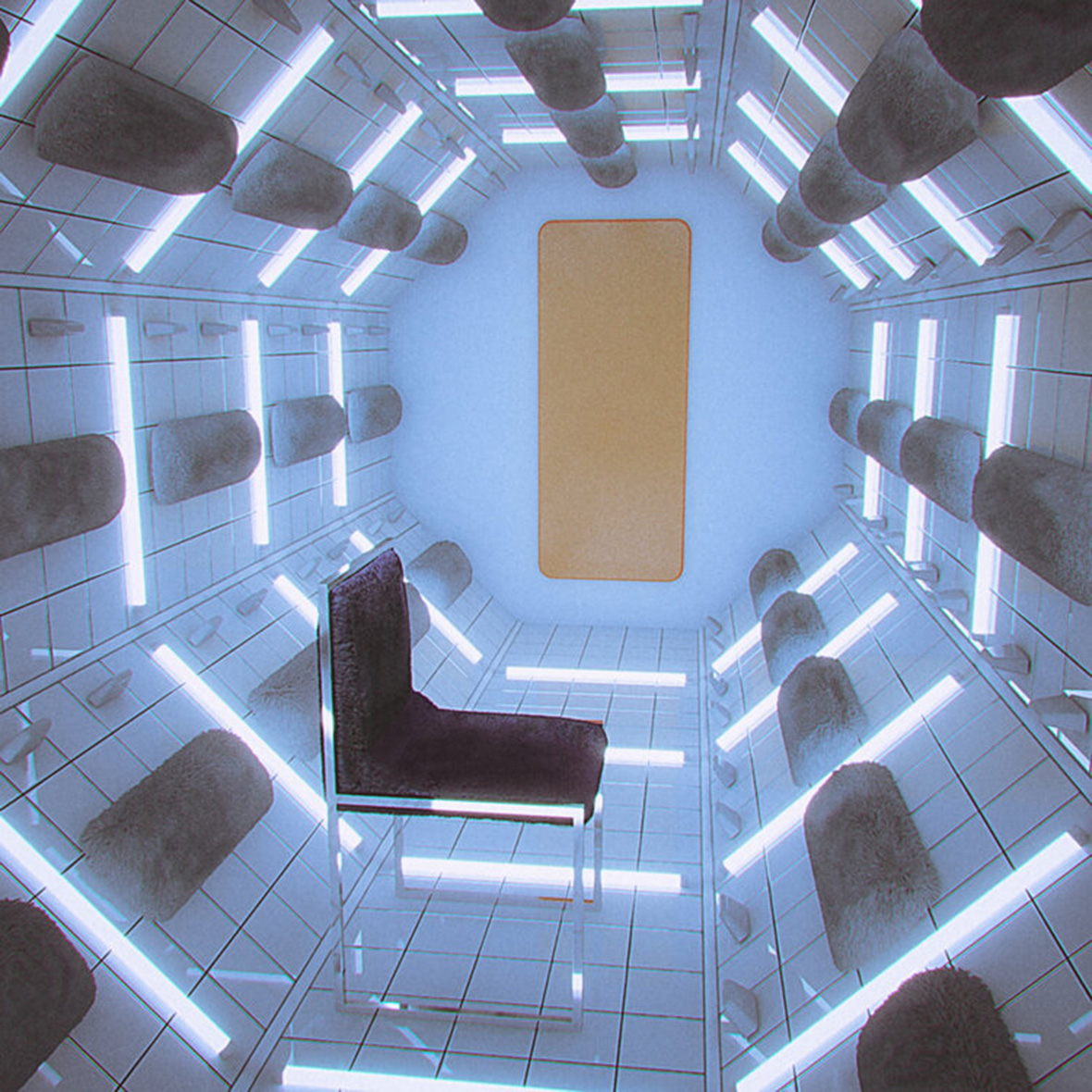
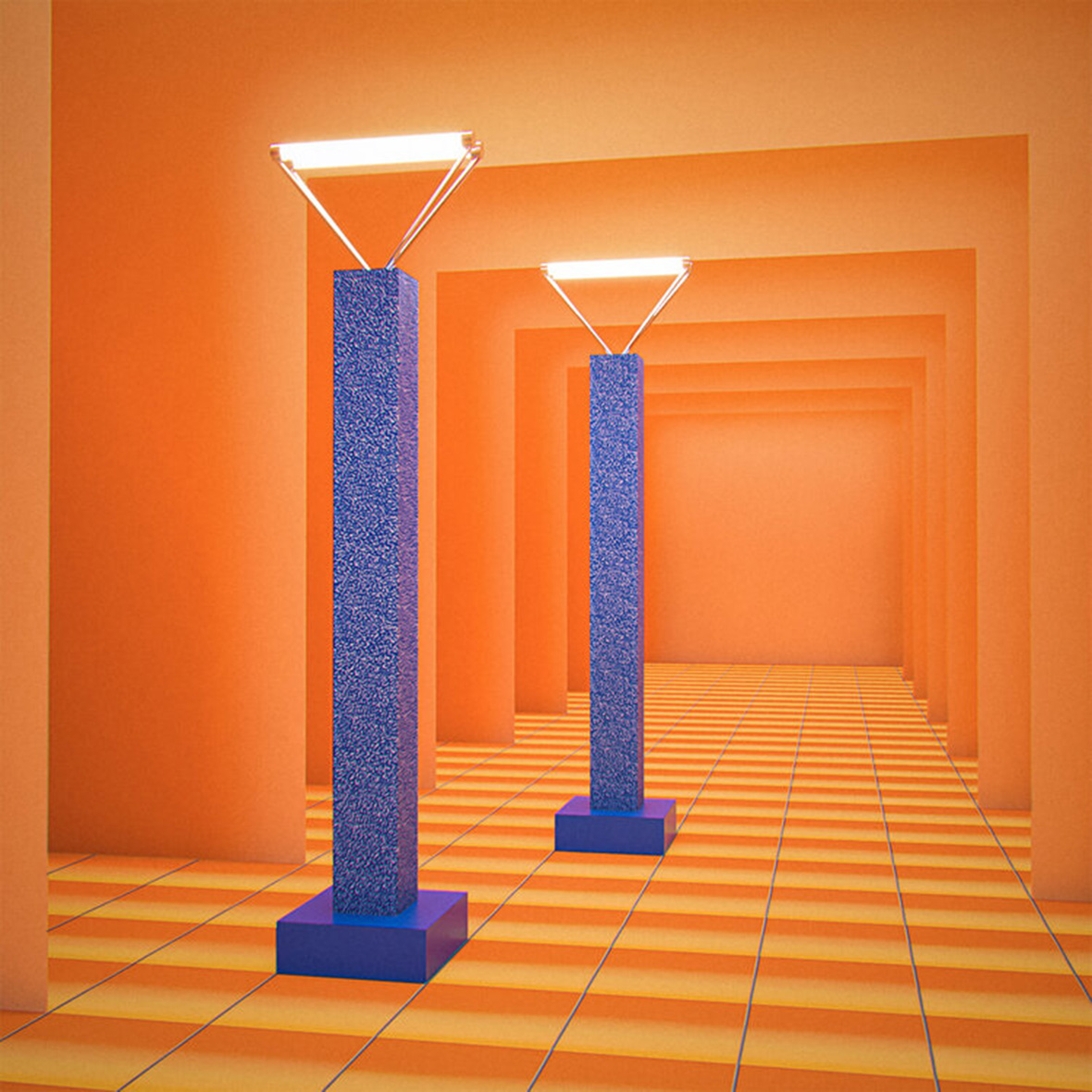
Although photos of the recent Subconscious installation can easily be mistaken for CGI, it’s entirely physical. At times, the colors of the rooms are so rich, they infuse the whole space with their features, much like a digitally altered image might. But Han says he doesn’t even use colored lights for the photographs, instead relying on a mix of natural light and neutral white light. The paint has a certain amount of reflectivity and the time of day can affect the color of a room, so depending on when the apartment is viewed, the vibrance and shape of a room changes.
The concept of mental wellness is central to the installation, and his lamps and furniture are the most literal means of shining light on the topic. Many designs, embroidered with text in both English and Chinese, speak directly to the theme of mental health. One lamp titled Dopamine reads, “My doctor can’t explain my symptoms or my pain.” Another titled Serotonin-Sertraline presents questions that a therapist would ask, such as “Do you feel satisfied with your decision?” and “What would you do differently next time?”
虽然《心伺令》艺术装置的照片很容易被误认为是 CGI 图像,但其实都是实景拍摄。有时,房间内的高饱和色彩,为整个空间注入独有的气氛,看上去就像是电脑修图效果。韩笃一表示,他在拍摄时没有使用任何彩色灯光道具,纯粹依靠自然光和中性白光的映衬。油漆能在一定程度上反射光线,而且在一天中不同时间,房间的颜色也会有所变化,所以,当观众在不同时间到访民宿,也会看到房间呈现出的不同色彩。
心理健康是整个装置的核心。他在灯具和家具中,通过丰富的中英文刺绣细节,以直白的方式探讨着心理健康的主题。一盏名为 “多巴胺” 的灯上写着 “My doctor can’t explain my symptoms or my pain.”(就连医生也无法解释我的症状或疼痛);另一盏灯名为 “血清素-舍曲林”(抗抑郁药物)的灯上,则列出了心理治疗师常问的问题,例如 “Do you feel satisfied with your decision?”(你对自己的决定满意吗?)和 “What would you do differently next time?”(下次你会有什么不同的做法?)等等。
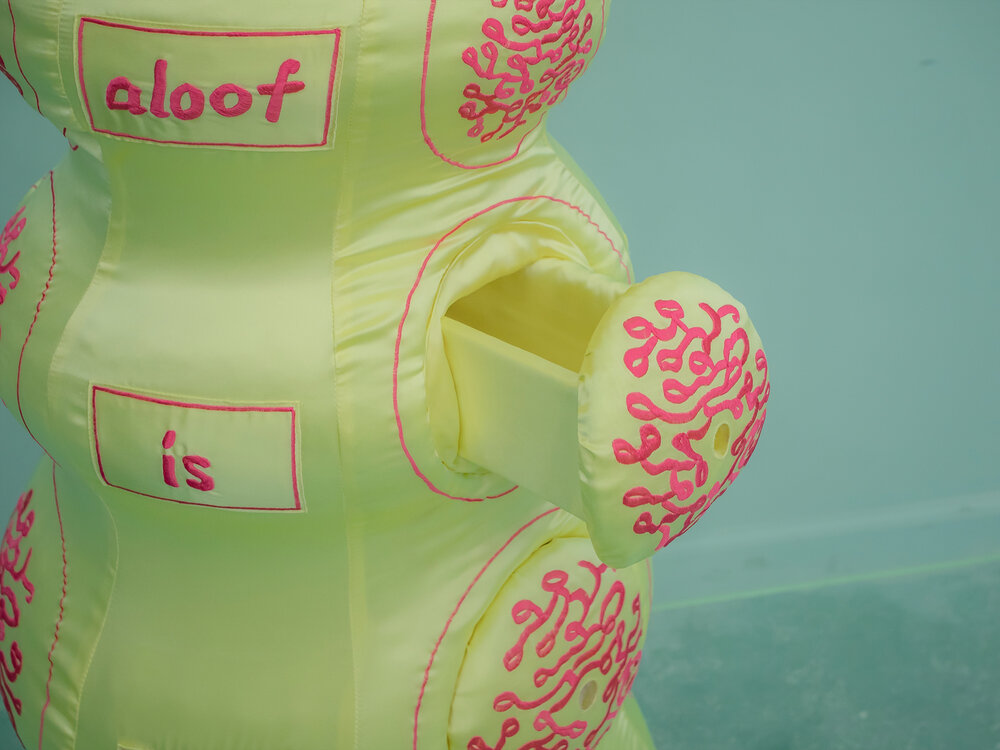
Awareness about mental health is still lagging in China, Han says: “When you look at the stats and really talk to people, it’s clear that there are a lot of things that still need improvement. There are more and more people interested in systematically educating themselves about well-being and mental health in a modern, scientific way. But the majority of the older generation are not really open to learning about this. Issues resulting from generation gaps are pervasive and create a lot of problems. My friends and schoolmates have made me realize a lot of issues are quite common in different families and situations. When there are personal emotional issues between my parents’ generation and mine, emotions are kept in check and there is rarely much of a healthy process of sorting out feelings. My generation shows more individuality and investment in emotion-related communication.”
在中国,人们对心理健康的认识仍然欠缺,韩笃一说:“如果你查看统计数据,真正去和人们交谈过,就能清楚知道,还有很多问题需要改进。越来越多人会通过现代、科学的方式系统地学习心理健康的知识,但老一辈中很多人并不太愿意了解这方面的问题。代沟导致的问题很普遍,也产生了很多问题。我从朋友和同学身上发现,很多不同家庭其实都存在共通的问题。当父母这一代和我们这一代之间出现情感问题时,往往都会压抑在心里,人们很少通过健康的方式来宣泄情感。我们这一代人更关注自我,更愿意进行情感方面的交流。”
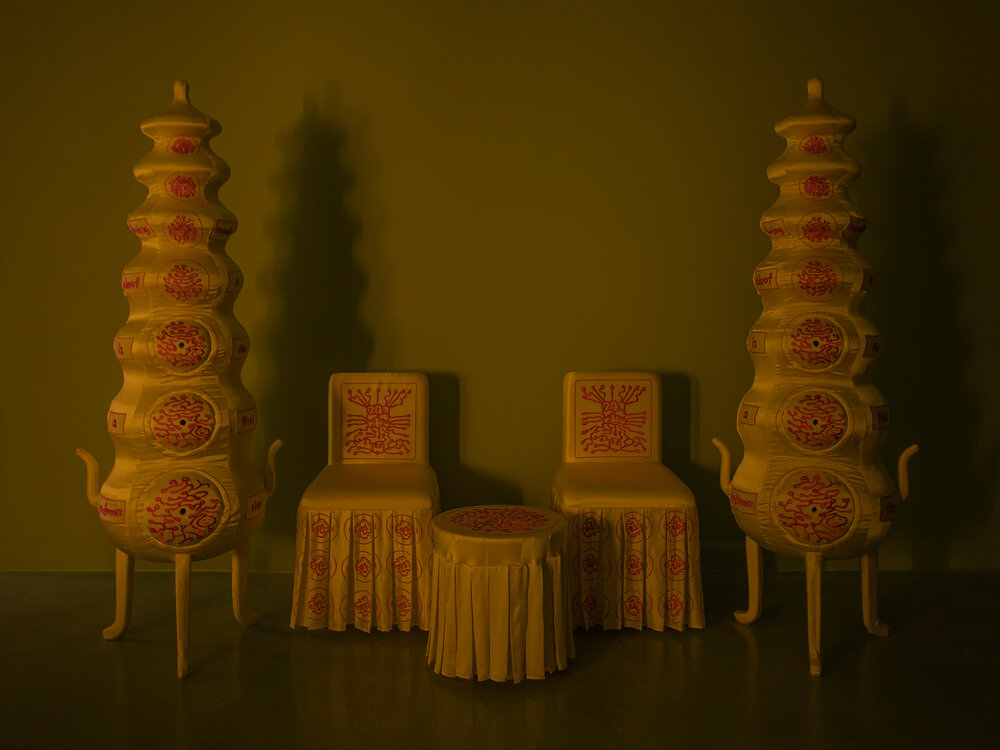
Han addresses this directly in Subconscious by utilizing traditional objects, fabrics, and crafts pulled from regional and religious heritage. Serotonin, for example, is based on Chinese ceremonial objects like the Buddhist parasol, while Dopamine is inspired by Taoist furniture and diagrams. To create these pieces, he worked with experienced craftspeople trained in ancient Suzhou embroidery, a craft that has existed for centuries in the area that the apartment is located.
“I used these local religious devices to represent more contemporary content that is maybe more relevant to people’s lives,” he explains. “It’s a heritage that many people are familiar with but don’t really interact with in their daily lives. Someone might visit a temple, but they don’t necessarily have an altar in their home or anything.” By doing so, he hopes to draw out their meaning.
为了探讨这个问题,韩笃一在《心伺令》中运用了很多地方传统宗教的物件、布料和工艺。例如,“血清素-舍曲林”灯的灵感来自佛伞等中式祭祀用品,而“多巴胺”灯的灵感则来自道教符号。为了创作这些作品,他与熟悉古代苏式刺绣的资深工匠合作。这种刺绣工艺在民宿所在的地区已经有几百年历史。
他解释说:“我用当地的宗教物件来探讨与现代人们生活更相关的内容。许多人知道传统文化,但在日常生活中又很少能接触到。有的人可能会去寺庙参拜,但他们家里却不一定会放神台。”他希望藉此方式来挖掘这些物品在当代人日常生活中的意义。
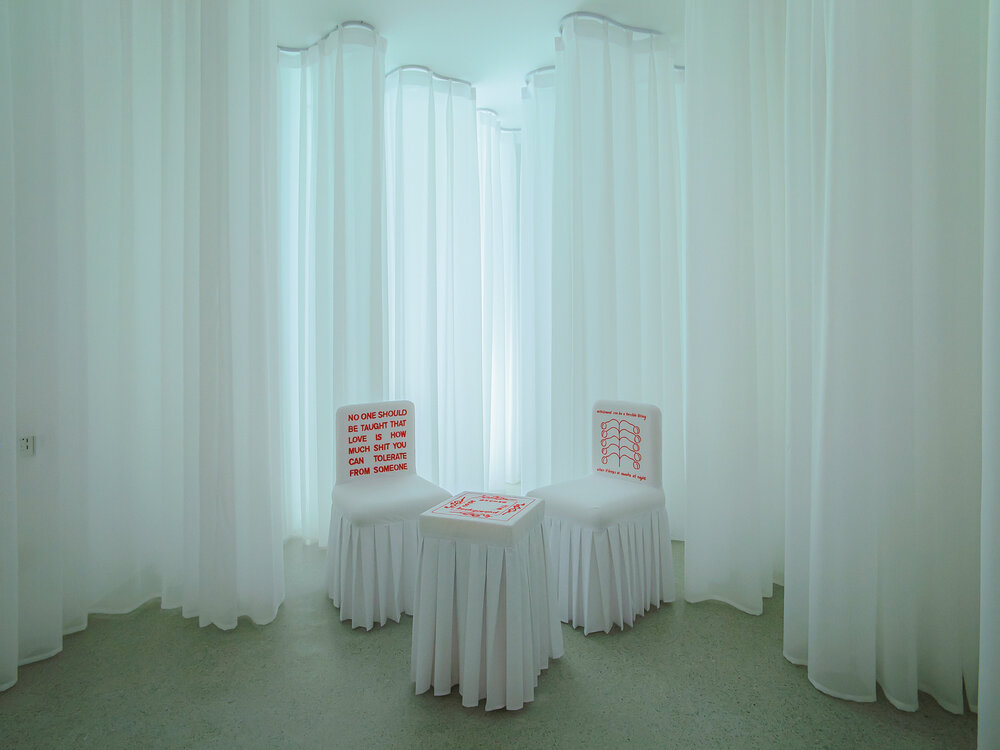
“Certain parts of religion are geared towards helping people relieve their pain and pursue well being and happiness. In a way, this is the same objective in psychology and medication. They have the same goals but use different means. It’s primarily meant to represent what people believe today, rather than actively telling people they should do this or that for their mental health. It’s not an active critique of the overdose of certain chemicals or idolization of conventional beliefs in religion. It’s open to interpretation and promotes discussion.”
“宗教在某些方面是为了帮助人们减轻痛苦,追求幸福安康。而在某种程度上,这其实也是心理学和医学的目标。这三者有着共同的目标,只是使用的方式大不一样。《心伺令》主要是引发现代人对于信仰的思考,而不是教导人们为了心理健康应该去怎样做,也不是要批判人们对某种药物的过度依赖、或对传统宗教的迷信。它可以有各种解读,但目的只是为了促进你的思考与探讨。”
Like our stories? Follow us on Facebook and Instagram.
Website: www.duyihan.com
Instagram: @duyi.han
Contributor: Mike Steyels
Chinese Translation: Olivia Li



